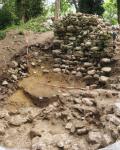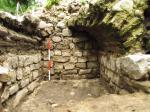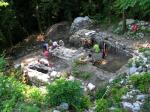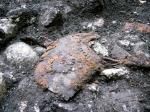Summary (English)
The remains of the fortified settlement are situated at 222 m a.s.l. on the north-western side of the ridge known as Monte della Guardia (2990 m), at the confluence of the Torre torrent, to the west, and the small rio Motta, at the bottom of a narrow valley on the eastern side. To the north-west and south-east, the site is naturally defended by the steep slopes above the two watercourses. The approach was also hindered to the south-west where the ridge narrows, while the site was defended to the north-east by the construction of a ditch that isolated the settlement from the rest of the ridge. The latter, is the continuation of a hill system that precedes the higher peaks of Friuli’s eastern piedmont. The castle’s remains stand at c. 1.5 km from the town of Savorgnano del Torre and 12 km from Udine.
The castle walls extend over a surface area of c. 6000 m2: an area 115 m long and 40-60 m wide. Until 2006, the research begun in 1997 by Udine University concentrated on the summit area, to the north-east, where the structures of the polygonal keep and other aristocratic residences are present. In 2005, the zone to the south-west was also partially investigated. Later, until 2009 and then in 2014, work continued with sondages in the sector situated between the north-east and south-west part of the summit.
A sequence of phases has been identified from the results of the research undertaken to date. The phases are grouped into five periods: Period A – early medieval settlement (7th/8th – 11th century); Period B – settlement structures dating to the 11th – late 13th century: at the end of this period the castle was violently destroyed; Period C – the 14th century castle (late 13th – early 15th century), in this period there was a notable increase in the buildings with numerous successive transformations; Period D – decline of the site (15th century): the site was used but no longer as a fortification. An oven/kiln was present at this time in the keep; Period E – abandonment and final collapse.
The 2014 campaign concentrated on the area immediately south of the so-called “diaphragm”, a residual wall that physically divided the summit area occupied by the keep and main residential structures, from the central part of the site, characterised by the presence of residual walls that cannot be further identified. It is thought that this area may have been a courtyard or small open-air space. In particular, the recent excavations investigated wall CF8 and the midden USM 355.
It was seen that the curtain wall surrounding the keep and aristocratic residences from the 11th – 13th century continued to the south-east. This wall, uncovered for about 12 m, is 1 m wide at the base and was built with a loose core and facings arranged in horizontal rows of large limestone cobbles and worked stones. It represents the earliest element investigated during the 2014 season and is attributed to period B.
The area abutting the curtain wall was transformed by the positioning of new structures (buttresses, blockings, and new buildings) which could be attributed to Period C, some strengthening the castle’s defences, others more difficult to identify due to the impossibility of further investigating the stratigraphy. Beaten floor surfaces, pits, a hearth made up of thin sandstone slabs placed on top of a charcoal-rich layer, and the construction up against dividing wall CF8, of a midden, already identified in 2009 but not excavated, can also be attributed to this period.
- Simonetta Minguzzi – Dipartimento di Storia e Tutela dei Beni Culturali (ora Dipartimento di Studi Umanistici e del Patrimonio Culturale), Università degli Studi di Udine
Director
- Simonetta Minguzzi – Dipartimento di Storia e Tutela dei Beni Culturali (ora Dipartimento di Studi Umanistici e del Patrimonio Culturale), Università degli Studi di Udine
Team
- Fabio Piuzzi – Antiquarium della Motta e Mostra del Fossile di Povoletto
- Massimiliano Francescutto - Dipartimento di Storia e Tutela dei Beni Culturali (ora Dipartimento di Studi Umanistici e del Patrimonio Culturale), Università degli Studi di Udine
Research Body
- Università degli Studi di Udine
Funding Body
- Università degli Studi di Udine in collaborazione con il Centro Regionale di Catalogazione e Restauro dei Beni Culturali del Friuli Venezia Giulia (ora Ente Regionale PAtrimonio Culturale della Regione Friuli Venezia Giulia)





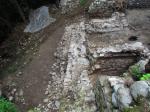
![Download [PDF]](/excavation/skins/fasti/images/results/download_sml.png)
